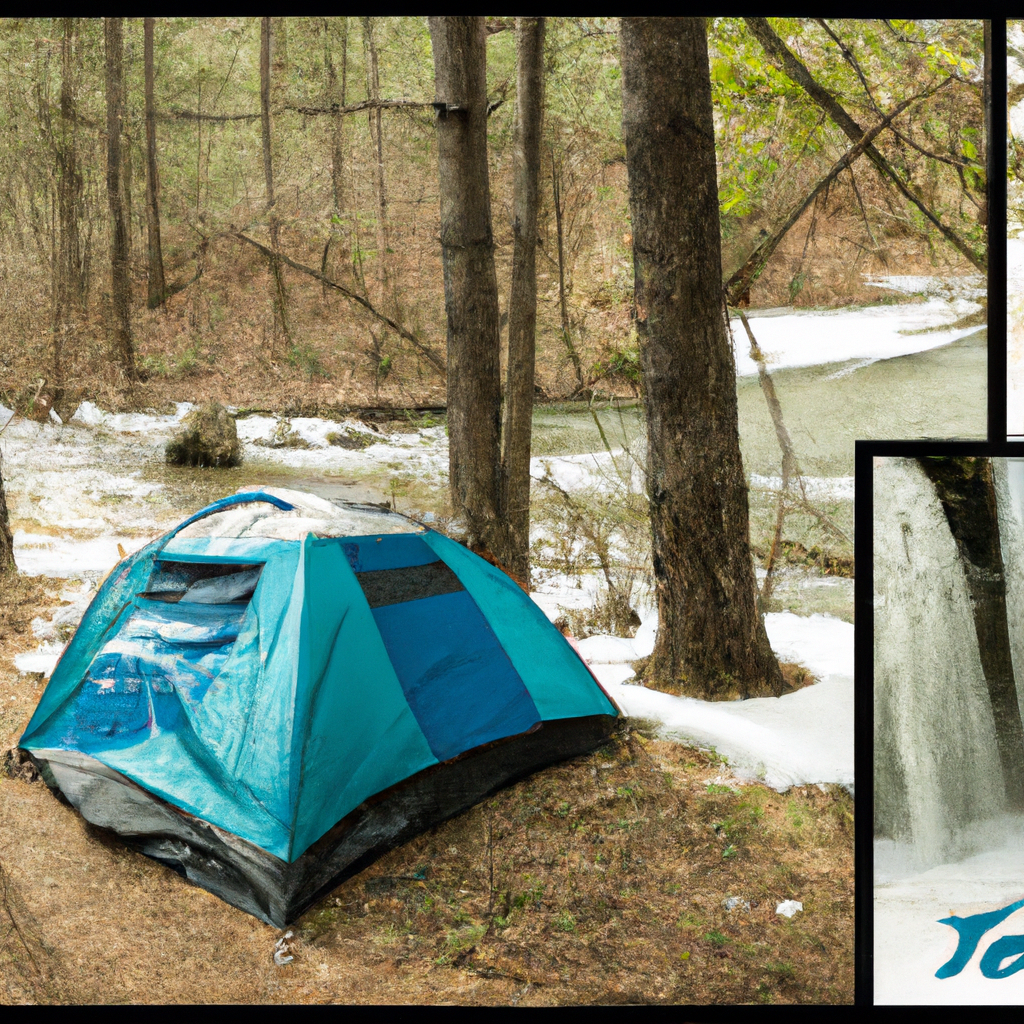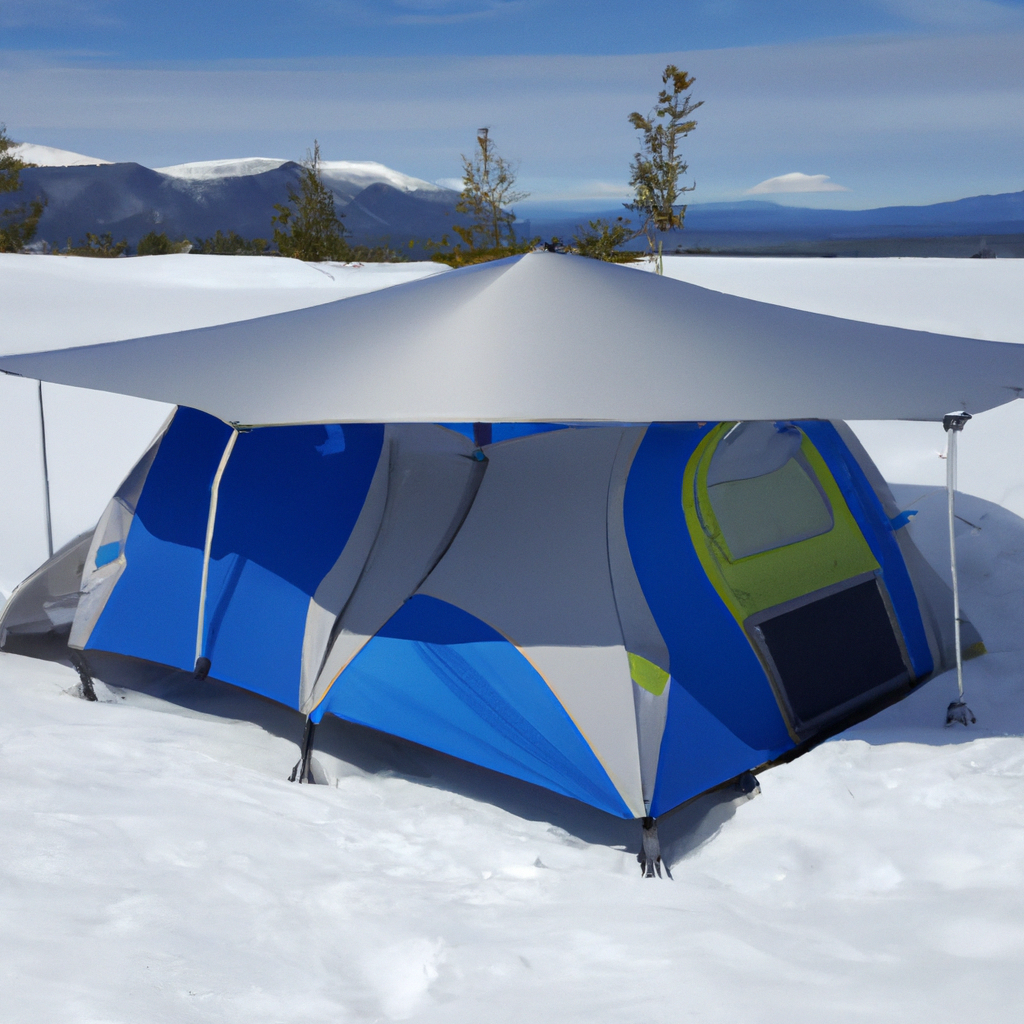If you’re an avid camper or outdoor enthusiast, you’ve probably come across the terms “four-season tent” and “three-season tent.” But what exactly do these terms mean, and how do they differ? Well, let’s break it down for you. A four-season tent is designed to withstand harsh weather conditions and can be used in all seasons, while a three-season tent is more suitable for spring, summer, and fall camping. So, whether you’re planning a winter camping trip or just want to be prepared for unpredictable weather, understanding the difference between these two types of tents is essential. Let’s explore further.
Design
Pole Structure
When considering the design of a tent, one important aspect to consider is the pole structure. Four-season tents typically have a stronger and sturdier pole structure compared to three-season tents. This is because four-season tents are designed to withstand harsh weather conditions such as high winds and heavy snow loads. They often have more poles and thicker pole diameters to provide additional stability and support. On the other hand, three-season tents usually have a lighter pole structure to prioritize weight savings and portability.
Shape
The shape of a tent can also vary between four-season and three-season models. Four-season tents often feature a dome or geodesic shape, which helps to distribute wind and snow load more effectively. This shape enhances stability and reduces the chance of collapse under extreme weather conditions. Three-season tents, on the other hand, commonly have a tunnel or modified dome shape, which prioritizes livable space and ventilation over extreme weather protection.
Ventilation Features
Both four-season and three-season tents incorporate ventilation features to prevent condensation buildup inside the tent. However, four-season tents generally have fewer vents due to their focus on weather resistance. This can lead to reduced airflow and increased condensation during warmer months. Three-season tents, on the other hand, prioritize ventilation to keep the interior cool and comfortable in mild weather. They often feature multiple mesh panels, large windows, and vents strategically placed throughout the tent to promote airflow.
Seasonal Suitability
Four-Season Tents
As the name suggests, four-season tents are designed to withstand the harshest weather conditions throughout the year. They offer superior protection against snow, wind, and cold temperatures, making them ideal for winter camping, mountaineering, and expeditions in extreme environments. Four-season tents have sturdy pole structures, reinforced fabrics, and waterproof coatings to ensure durability and weather resistance. They provide excellent insulation and retain warmth effectively, allowing you to stay comfortable in freezing temperatures.
Three-Season Tents
Three-season tents are more suitable for milder weather conditions during spring, summer, and fall. They are lightweight, compact, and easy to carry, making them popular among backpackers and campers. While three-season tents offer protection against rain and moderate winds, they are not designed to withstand heavy snow loads or extreme temperatures. They prioritize ventilation and breathability to keep you cool during warmer months. Three-season tents are versatile and can be used for a variety of outdoor activities, including hiking, backpacking trips, and camping in non-extreme environments.

Weather Resistance
Snow Load Capacity
One of the key differences between four-season and three-season tents is their snow load capacity. Four-season tents are specifically designed to handle heavy snow accumulation. They have steep sidewalls and strong pole structures that prevent snow build-up and ensure the tent remains stable. The fabrics used in four-season tents are often reinforced and have a higher waterproof rating to prevent water from seeping through. In contrast, three-season tents are not designed to withstand heavy snow loads and may collapse under the weight. They have a lower snow load capacity and are not suitable for winter camping or mountaineering.
Wind Resistance
Both four-season and three-season tents prioritize wind resistance, but four-season tents excel in this area. The sturdy pole structure, geodesic shape, and reinforced fabrics of four-season tents make them more capable of withstanding strong winds. These tents can be securely anchored to the ground using additional guylines and anchors, providing extra stability in high winds. Three-season tents, while still offering some degree of wind resistance, may not be able to withstand extreme gusts. They are designed for moderate wind conditions and may require additional measures to secure them in stronger winds.
Insulation
Thermal Efficiency
Insulation is an important factor to consider when choosing a tent, especially for camping in colder conditions. Four-season tents typically have better thermal efficiency compared to three-season tents. They are designed to trap and retain heat effectively, ensuring you stay warm even in freezing temperatures. The fabrics used in four-season tents have a higher insulating value and can better block cold drafts. These tents also have fewer mesh panels, which minimizes heat loss and keeps the interior warmer.
Warmth Retention
Three-season tents, while not as well-insulated as their four-season counterparts, still provide adequate warmth retention for moderate weather conditions. They are designed to allow for more airflow, which can be beneficial during warmer months. However, this also means that three-season tents may not retain heat as effectively during colder nights. It is advisable to use a warm sleeping bag and additional insulation layers when camping in cooler temperatures with a three-season tent.

Weight and Portability
Four-Season Tents
Four-season tents are generally heavier and less portable compared to three-season tents. Their focus on weather resistance and durability means they often utilize stronger and more robust materials, resulting in increased weight. Additionally, the sturdier pole structure and additional reinforcements contribute to their heavier overall weight. While four-season tents may not be suitable for long backpacking trips or situations where weight is a significant concern, their superior performance in extreme weather conditions makes them a worthwhile choice for certain outdoor activities.
Three-Season Tents
On the other hand, three-season tents are designed with weight and portability in mind. They are lighter, more compact, and easier to carry, making them ideal for backpackers and those who value mobility. Three-season tents utilize lighter materials and thinner pole structures to achieve a better weight-to-performance ratio. Their reduced weight allows for easier transportation and more flexibility when selecting camping spots. If you prioritize lightweight gear and plan to camp in non-extreme weather conditions, a three-season tent is likely the best choice for you.
Durability
Materials
Both four-season and three-season tents are constructed using durable materials, but there are differences in their specific fabric choices. Four-season tents often use heavier and more robust materials to ensure longevity and resistance against harsh conditions. They may incorporate stronger nylon or polyester fabrics, often with higher denier ratings, which refers to the thickness and strength of the fabric fibers. Three-season tents, while still made from durable materials, tend to prioritize lighter options to reduce weight. These tents commonly use lightweight nylon or polyester blends that offer a good balance between durability and weight savings.
Construction
The construction of a tent plays a significant role in its durability. Four-season tents are built with reinforced stitching and additional reinforcements at high-stress points, such as corners and pole connections. This reinforced construction ensures that the tent can handle the extra forces and stresses of extreme weather conditions. Three-season tents also feature solid construction techniques but may not have the same level of reinforcements as their four-season counterparts. This makes three-season tents more susceptible to wear and tear over time, especially if exposed to demanding conditions on a regular basis.
Reinforcements
In addition to materials and construction, reinforcements are another factor that contributes to the durability of a tent. Four-season tents often have reinforced guyout points, where guylines and anchors can be attached to increase stability in high winds. These reinforcements prevent tears and damage caused by the constant tension and pressure on the tent. Three-season tents may have fewer or lighter reinforcements in order to reduce weight. While they are still durable for their intended use, they may not be as resilient as four-season tents when exposed to harsh conditions or prolonged use.
Price
Four-Season Tents
Due to their specialized design and features, four-season tents typically come with a higher price tag compared to three-season tents. The use of stronger materials, reinforced construction, and additional weatherproofing measures contribute to the increased cost. If you plan on camping in extreme conditions or require the added durability and protection of a four-season tent, the investment may be worthwhile. However, if you primarily camp in milder climates or during the warmer seasons, a three-season tent can provide sufficient comfort and performance at a lower price point.
Three-Season Tents
Three-season tents are generally more affordable compared to four-season tents. Their lighter construction and focus on ventilation and livability allow for cost savings in materials and production. For those who prioritize budget-friendly options or engage in activities that don’t require the extreme weather capabilities of a four-season tent, a three-season tent offers a more economical choice. The price difference between four-season and three-season tents can vary based on brand, size, and specific features, so it is always recommended to research and compare options before making a purchase.
Intended Use
Climbing and Mountaineering
Four-season tents are particularly well-suited for climbing and mountaineering expeditions. Their ability to withstand extreme weather conditions, heavy snow loads, and strong winds make them essential for alpine environments. These tents offer a secure and reliable shelter in harsh climates, where protection and safety are paramount. Their durability and insulation allow climbers and mountaineers to rest and recharge in challenging conditions, ensuring their well-being and performance during the expedition.
Backpacking and Camping
Three-season tents are the preferred choice for backpacking and camping trips in milder weather. Their lightweight construction and compact size make them easy to carry in a backpack, allowing for greater mobility on long-distance hikes. Three-season tents are versatile and can adapt to a wide range of camping situations, from beachside excursions to forest adventures. They provide comfortable shelter, protection against rain and moderate winds, and sufficient ventilation to keep you cool on warm summer nights. Whether you are a weekend camper or a seasoned backpacker exploring new trails, a three-season tent offers the versatility and convenience you need.
Setup and Disassembly
Four-Season Tents
Four-season tents often require more time and effort to set up and take down compared to three-season tents. The additional pole structure, guylines, and reinforcements can make the setup process more intricate. It is important to properly stake the tent and anchor it securely to ensure stability in challenging conditions. Although setting up a four-season tent may take more practice and experience, manufacturers often provide detailed instructions to guide you through the process. With familiarity and practice, the setup becomes easier and more efficient over time.
Three-Season Tents
Three-season tents are generally easier and quicker to set up and take down. The lighter pole structure and simpler designs make assembly straightforward, even for beginners. Many three-season tents utilize color-coded components and intuitive designs to simplify the setup process. Some models even offer freestanding setups, allowing you to move and adjust the tent placement more easily. Taking down a three-season tent is also a relatively simple process, making it convenient for those who frequently move campsites or need to pack up quickly.
Additional Features
Vestibules
Many four-season and three-season tents come equipped with vestibules, which are covered areas outside the main tent body. Vestibules provide extra storage space for gear and muddy boots, keeping the interior clean and organized. In four-season tents, vestibules often have larger sizes to accommodate bulkier equipment, such as mountaineering gear or snowshoes. Three-season tents may have smaller vestibules, but they still offer a convenient space to store backpacks and other belongings.
Guy Lines and Anchors
Both four-season and three-season tents use guy lines and anchors to enhance stability in windy conditions. Guy lines are attached to the tent and anchored to the ground, providing additional support and preventing the tent from flapping in the wind. Four-season tents typically have more guy lines and anchor points to maximize stability, as they are designed to withstand stronger winds. Three-season tents also feature guy lines but may require additional stakes and anchors to improve stability during moderate winds.
Rainfly
Rainflies are protective coverings that go over the tent body, providing an additional layer of waterproofing. Most four-season and three-season tents come with rainflies to keep the interior dry during rain showers. Four-season tent rainflies often extend close to the ground, offering enhanced protection against wind-driven rain and snow. Three-season tent rainflies may have a more minimal design, providing sufficient protection against rain while allowing for increased airflow and ventilation.
Flooring
The flooring of a tent is an important consideration for both four-season and three-season models. Four-season tents commonly feature thicker and more durable floors to withstand the wear and tear of harsh environments. They often have higher waterproof ratings and elevated bathtub designs to keep moisture from seeping in. Three-season tents may have thinner floors to reduce weight but still provide adequate protection against ground moisture and minor water ingress. It is advisable to use a footprint or groundsheet beneath the tent to further protect the floor and extend its lifespan.
In conclusion, the difference between a four-season and three-season tent lies in their design, seasonal suitability, weather resistance, insulation, weight and portability, durability, price, intended use, setup and disassembly process, and additional features. Four-season tents are built to withstand extreme weather conditions and offer superior protection, insulation, and durability. They are heavier and pricier compared to three-season tents but are essential for mountaineering and winter camping. Three-season tents are lighter, more affordable, and suitable for camping in milder weather conditions. They prioritize ventilation, weight savings, and ease of setup. Understanding these differences can help you choose the right tent for your outdoor adventures, ensuring comfort, safety, and enjoyable camping experiences.

